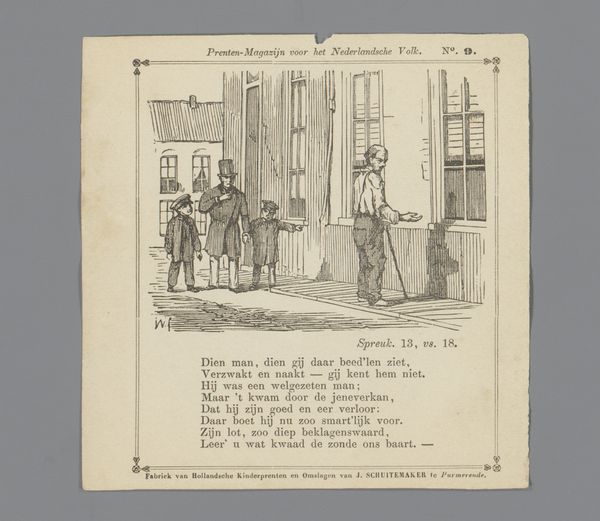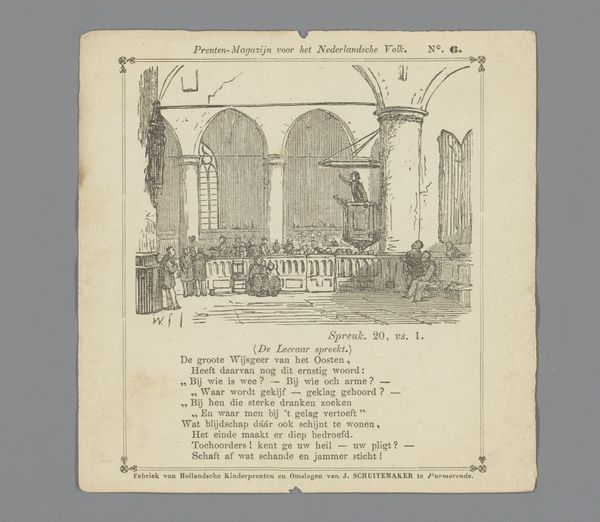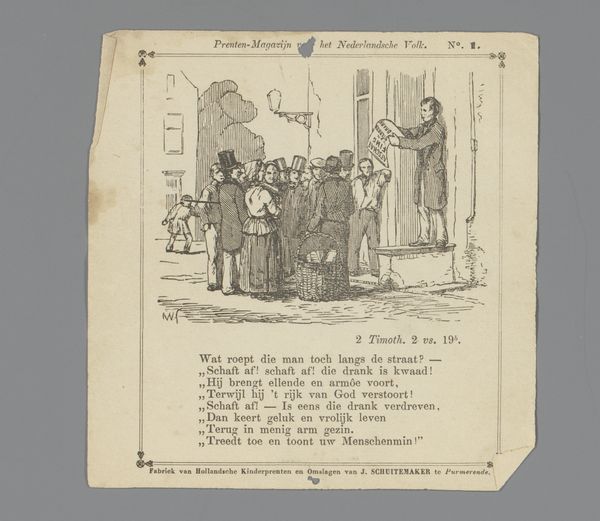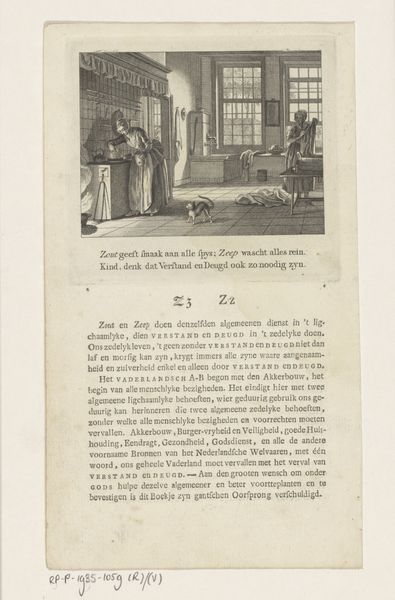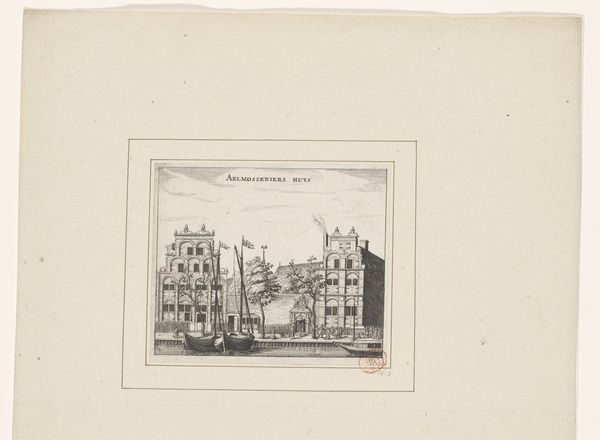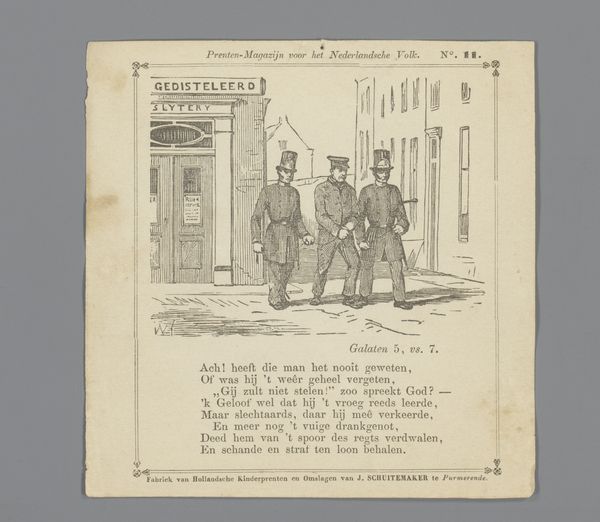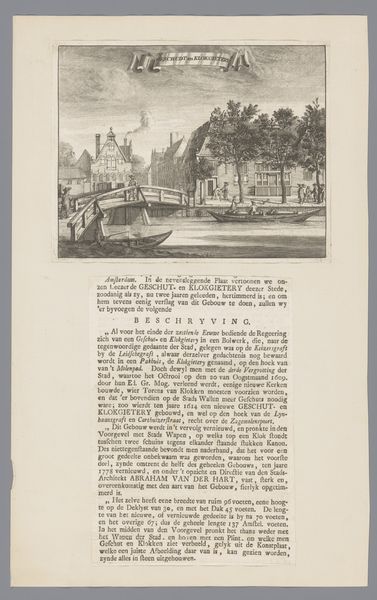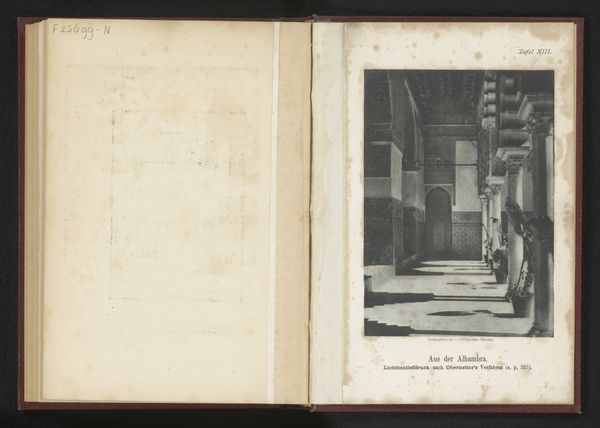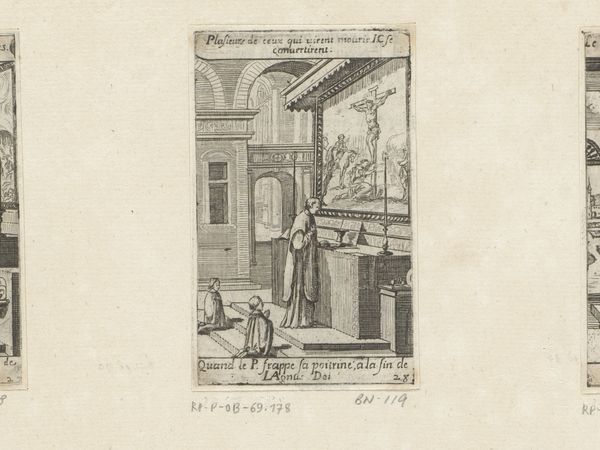
Man op straat ziet een andere man uit een winkel voor gedestilleerde drank komen 1838 - 1912
0:00
0:00
drawing, print, paper, pen, engraving
#
drawing
#
narrative-art
#
dutch-golden-age
# print
#
paper
#
pen
#
cityscape
#
genre-painting
#
engraving
Dimensions: height 125 mm, width 123 mm
Copyright: Rijks Museum: Open Domain
Editor: Here we have "Man op straat ziet een andere man uit een winkel voor gedestilleerde drank komen," created between 1838 and 1912 by Isaac Weissenbruch. It's a drawing, print, and engraving on paper depicting a cityscape. I find it intriguing how a simple street scene can feel so loaded with narrative, almost like a stage set. What do you see in this piece, in terms of the visual symbolism? Curator: Immediately, my eye is drawn to the juxtaposition of the figures: one entering the "gedistilleerd" – spirits shop – and another standing apart, observing. Consider the cultural weight carried by alcohol in 19th century Dutch society. Is this a cautionary tale? Editor: The poem below the image, hinting at the consequences of indulgence, definitely reinforces that idea. Is the artist moralizing, or just documenting a slice of life? Curator: It's a blend, I think. Genre paintings, common in the Dutch Golden Age style, often presented everyday scenes, but always through a lens. Note the detail in the shop's facade versus the more shadowed figure observing. The artist uses light and shadow to suggest moral judgment, perhaps a memory from the culture that lives within him and that he’s actively shaping for the viewer. Does the poem’s placement within the image frame it? Editor: It almost creates a picture-within-a-picture effect. It changes how I see the scene, almost like reading subtitles. Curator: Precisely. The words imbue the image with symbolic layers: temptation, judgment, the plight of the working class, so even a mundane act gains emotional and historical resonance. Visual cues become part of our shared memory. Editor: I hadn't thought of it that way, how images become a part of our cultural memory, not just something we look at passively. Curator: It's a conversation between the present and the past, with symbols as the language. It encourages deeper reflections about values embedded within our societies.
Comments
No comments
Be the first to comment and join the conversation on the ultimate creative platform.
